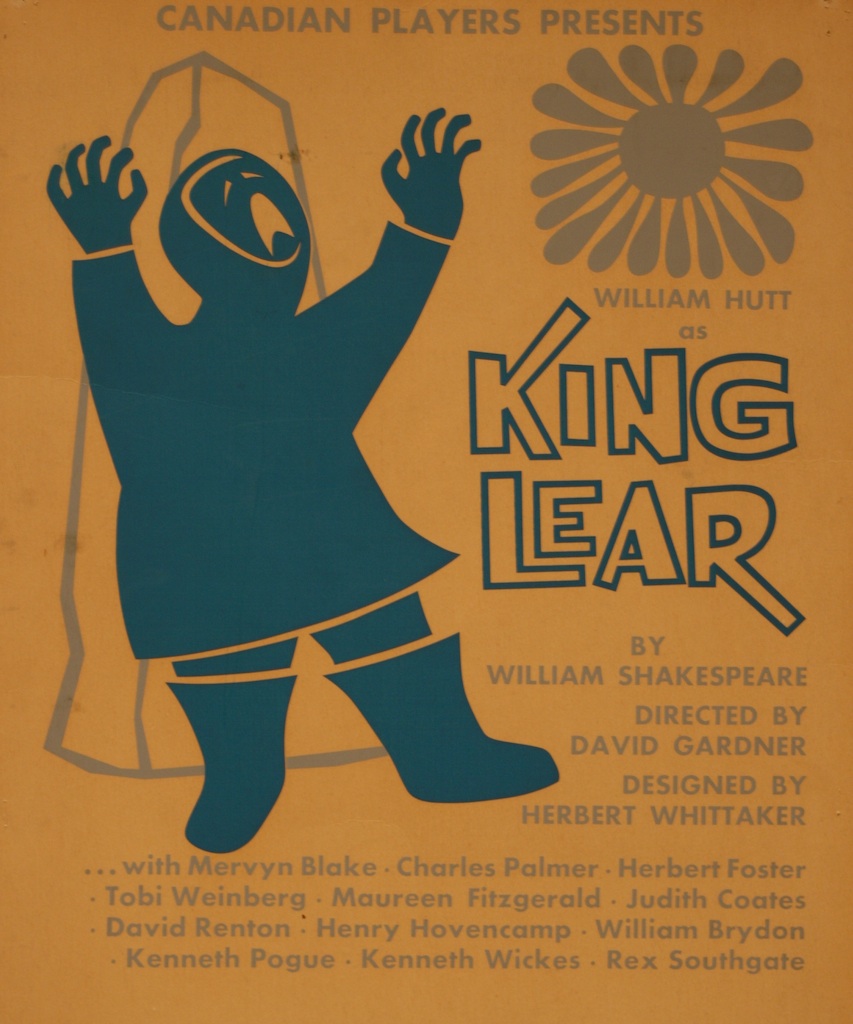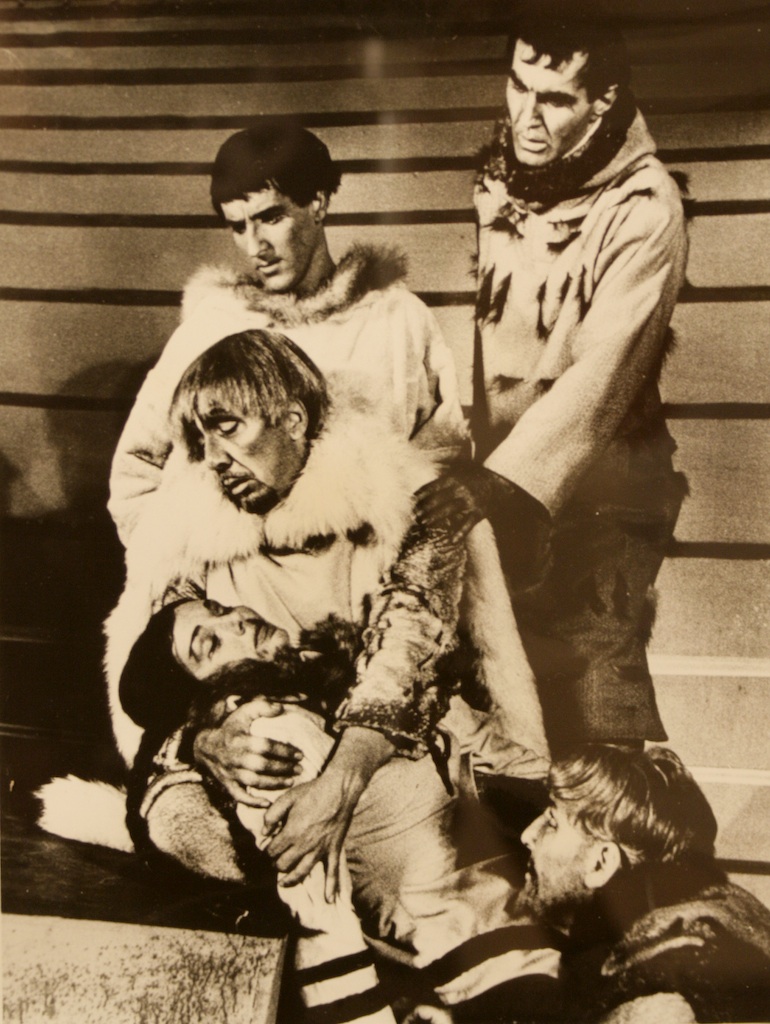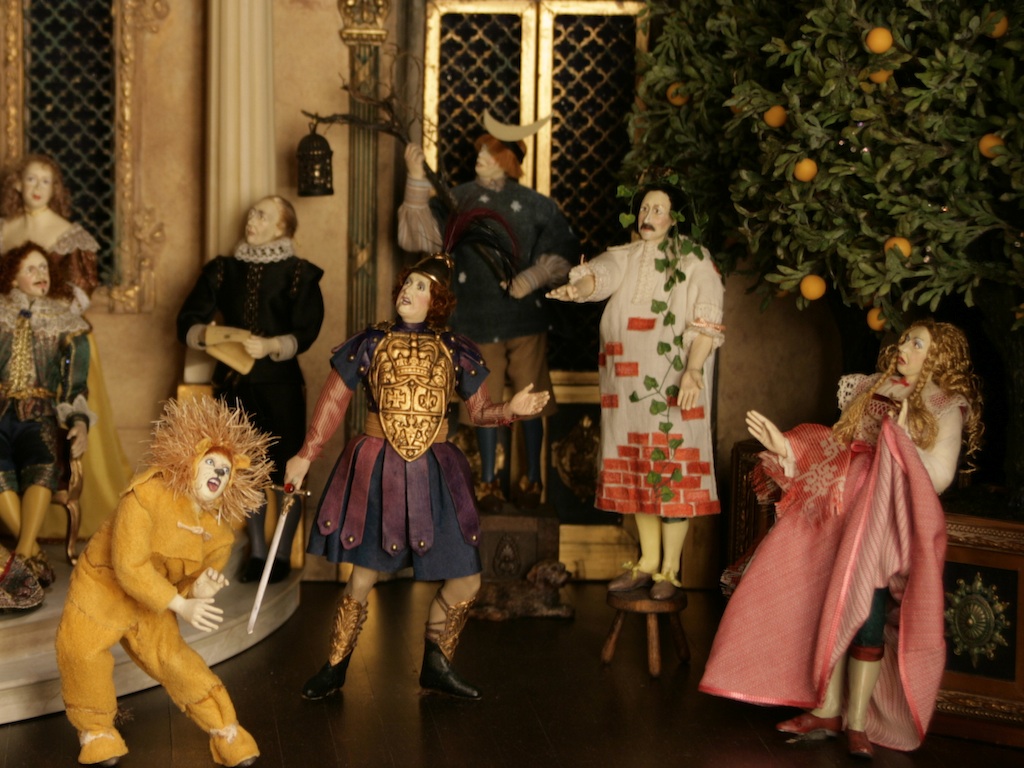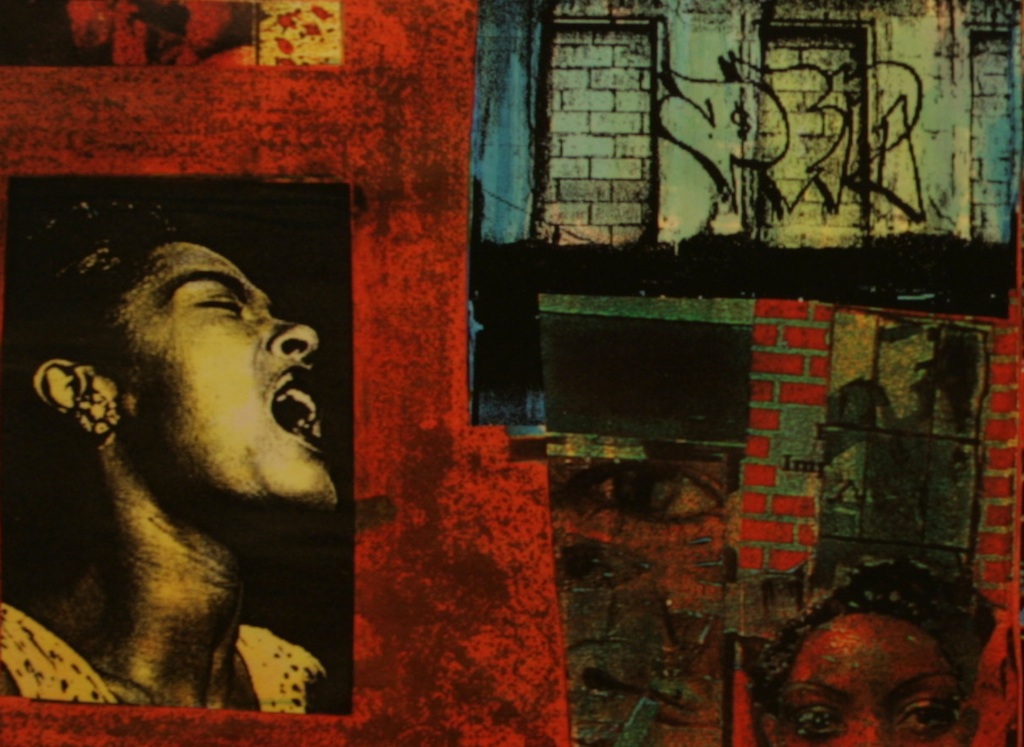Canadian Adaptations Video Gallery
Canadian Adaptations Video Gallery
Tongues in Trees Audio Gallery
Click here to return to the Introduction and here to view the Image Gallery
L.W. Conolly Archives Video Gallery
Click here to return to the Introduction and here to view the Image Gallery
Contemporary Portraiture Video Gallery
Click here to return to the Introduction and here to view the Image Gallery
YLC Video Gallery
Click here to return to the Introduction and here to view the Image Gallery
French Canada Video Gallery
Click here to return to the Introduction and here to view the Image Gallery
The Sanders Portrait Video Gallery
Click here to return to the Introduction and here to view the Image Gallery
Canadian Adaptations Video Gallery
Click here to return to the Introduction and here to view the Image Gallery
Tongues in Trees Image Gallery
Click here to return to the Introduction and here to view the Video Gallery
Introduction
 In 1961, theatre critic and designer Herbert Whittaker created a King Lear that took place not in Britain, but in the great white North of Canada under the guise of the “primitive society Canadians recognize best.” This “Eskimo Lear” took place in a time of new awareness and curiosity about First Nations peoples of Northern Canada, which in its own way heralded in an attempt to shed light on this largely unknown world. However, the blatant appropriation and misuse of visual images from another culture, which employed stereotypes and caricature rather than seeking the assistance of aboriginal actors or designers, reveals the legacy of colonial mentality that had already devastated aboriginal culture in Canada.
In 1961, theatre critic and designer Herbert Whittaker created a King Lear that took place not in Britain, but in the great white North of Canada under the guise of the “primitive society Canadians recognize best.” This “Eskimo Lear” took place in a time of new awareness and curiosity about First Nations peoples of Northern Canada, which in its own way heralded in an attempt to shed light on this largely unknown world. However, the blatant appropriation and misuse of visual images from another culture, which employed stereotypes and caricature rather than seeking the assistance of aboriginal actors or designers, reveals the legacy of colonial mentality that had already devastated aboriginal culture in Canada.
In 2002, Yvette Nolan, the artistic director of Native Earth Performing Arts (NEPA), an aboriginal performing arts organization, found herself sitting on panels discussing diversity in Toronto theatre. Despite the multicultural environment of Toronto, theatres struggled to reflect this reality. It was here that the idea of producing an Aboriginal Julius Caesar sprang into her head, as she remarked, “it’s really just about band politics after all.” Native performers are rarely considered for roles in Shakespeare, and the fact that many native actors are not educated through formal schools or conservatories further puts them at a disadvantage. Yet as Nolan paired with Kennedy MacKinnon, a vocal coach and teacher of Shakespeare, to create a predominantly female production of Death of a Chief, they came to realize that Shakespeare resonates with almost everyone, and the themes of power, identity, community, and leadership within Julius Cesar can be paralleled with the realities of First Nations communities across Canada.
 In order to confront present day issues, the collaborative team of actors, producers, and directors wrote about their own experiences and explored the stories from their traditions and how these resonated with aspects of Shakespeare’s version of the Caesar story. The history of First Nations peoples and Shakespearean texts in Canada has a long history of adaptations. Nicholas Flood Davin, a nineteenth century journalist (and the last person to “interview” Louis Riel), politician, and architect of the profoundly damaging Canadian residential school system, is a key figure in this history. Davin’s political views expressed in his Shakespearean adaptation, A Fair Grit, compounded the colonial imperative of the time, and utilized Shakespeare as a figurehead to privilege colonial culture over indigenous culture. Native Earth Performing Arts’ adaptation of Julius Caesar, by contrast, uses Shakespearean adaptation to reclaim First Nations culture by appropriating the tools of the colonizer, and thus represents a significant step in the emergence of a form of theatre that provides a space in which to initiate dialogue and healing about a devastating history of oppression and marginalization.
In order to confront present day issues, the collaborative team of actors, producers, and directors wrote about their own experiences and explored the stories from their traditions and how these resonated with aspects of Shakespeare’s version of the Caesar story. The history of First Nations peoples and Shakespearean texts in Canada has a long history of adaptations. Nicholas Flood Davin, a nineteenth century journalist (and the last person to “interview” Louis Riel), politician, and architect of the profoundly damaging Canadian residential school system, is a key figure in this history. Davin’s political views expressed in his Shakespearean adaptation, A Fair Grit, compounded the colonial imperative of the time, and utilized Shakespeare as a figurehead to privilege colonial culture over indigenous culture. Native Earth Performing Arts’ adaptation of Julius Caesar, by contrast, uses Shakespearean adaptation to reclaim First Nations culture by appropriating the tools of the colonizer, and thus represents a significant step in the emergence of a form of theatre that provides a space in which to initiate dialogue and healing about a devastating history of oppression and marginalization.
Introduction
 Theatrical design is often ignored as an art form, it is often thought of simply as an elaboration of a director’s ideas, rather than an artistic vision that plays a crucial role in defining how an audience experiences a play. Designers are in fact visual directors who, through collaboration with the director and playwright, clarify and enhance the playwright’s text through shaping light, spatial dimensions, sets, props, and costumes. The end product of great design, by its very materiality, breathes life into static texts and creates a stylistically rich and distinct imaginary world that supports the themes and interpretative gestures made in a specific production. Costume and set design are a significant space for developing the adaptive process–many adaptations of Shakespeare rely almost entirely on production design, including costume, sets, props and location, to situate an adaptive context while still utilizing the original script.
Theatrical design is often ignored as an art form, it is often thought of simply as an elaboration of a director’s ideas, rather than an artistic vision that plays a crucial role in defining how an audience experiences a play. Designers are in fact visual directors who, through collaboration with the director and playwright, clarify and enhance the playwright’s text through shaping light, spatial dimensions, sets, props, and costumes. The end product of great design, by its very materiality, breathes life into static texts and creates a stylistically rich and distinct imaginary world that supports the themes and interpretative gestures made in a specific production. Costume and set design are a significant space for developing the adaptive process–many adaptations of Shakespeare rely almost entirely on production design, including costume, sets, props and location, to situate an adaptive context while still utilizing the original script.
In Canada the origins of theatrical design are based on the British model, which acknowledges the predominance of Britain in shaping early Canadian theatre, and continues as a notable influence today. Canadian designers rose to prominence in the 1940s and have consistently moved away from the British model in both design and content. Notable precedents include Rolph Scarlett’s aesthetic and modernist approach to King Lear in 1928, and Herbert Whittaker’s distinctly Canadian design in 1961 for “Eskimo” Lear, in which he removed Lear from Britain and placed him in a recognizably Canadian location and culture. Recent Canadian designers have reflected the change in Canada’s cultural make-up and the corresponding movement away from traditional theatre, in such designs as Astrid Janson’s collages for Djanet Sears’ Harlem Duet, which was created in an Afro-modernist style, or Charlotte Dean’s 1995 non-gender specific King Lear, which used dyed rice paper as the basis for its androgynous figurings.
both design and content. Notable precedents include Rolph Scarlett’s aesthetic and modernist approach to King Lear in 1928, and Herbert Whittaker’s distinctly Canadian design in 1961 for “Eskimo” Lear, in which he removed Lear from Britain and placed him in a recognizably Canadian location and culture. Recent Canadian designers have reflected the change in Canada’s cultural make-up and the corresponding movement away from traditional theatre, in such designs as Astrid Janson’s collages for Djanet Sears’ Harlem Duet, which was created in an Afro-modernist style, or Charlotte Dean’s 1995 non-gender specific King Lear, which used dyed rice paper as the basis for its androgynous figurings.
Possible Worlds Image Gallery
Click here to return to the Introduction and here to view the Video Gallery
First Nations Image Gallery
Click here to return to the Introduction and here to view the Video Gallery
First Nations Video Gallery
Click here to return to the Introduction and here to view the Image Gallery
Possible Worlds Video Gallery
Click here to return to the Introduction and here to view the Image Gallery
The Sanders Portrait Image Gallery
Click here to return to the Introduction and here to view the Video Gallery
L.W. Conolly Archives Image Gallery
Click here to return to the Introduction and here to view the Video Gallery
French Canada Image Gallery
Click here to return to the Introduction and here to view the Video Gallery
Contemporary Portraiture Image Gallery
Click here to return to the Introduction and here to view the Video Gallery
Canadian Adaptations Image Gallery
Click here to return to the Introduction and here to view the Video Gallery
